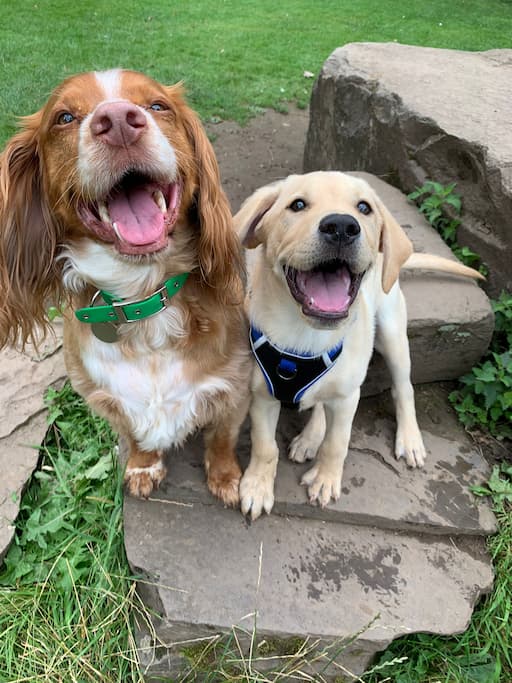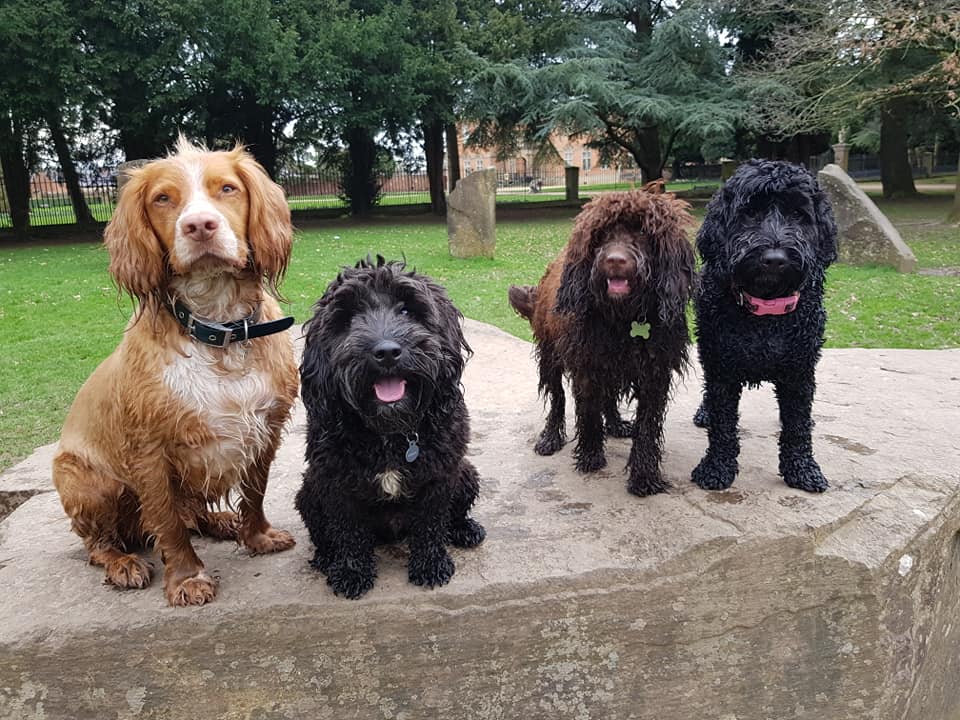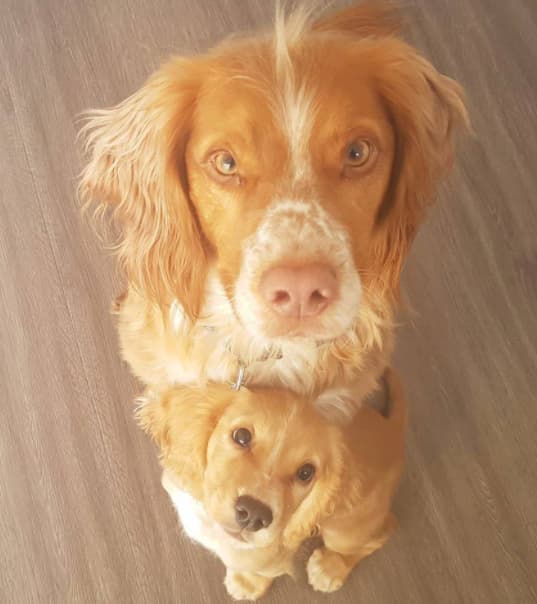Yes, dogs do get attached to their dog walkers (and we get attached to them too!)
Table of Contents
How do dogs get attached to dog walkers?
Dogs make associations all the time, that’s how they learn. They quickly associate sitting with getting a treat so they enjoy it and do it more often to try and elicit another treat.
So an owner’s dog will make associations with their dog walkers too. Most dogs really enjoy going out for a walk so they’ll link those good feelings with the person taking them. And that’s how bonding happens.
Owners often report that when they have a week off at home, their dogs still look out for us around the time we usually collect them. And if they see us walking their friends without them, their owner is long forgotten as they race over to join their pals.
I was once driving out of the park’s car park after walking my own dog, only to hear shouting behind me. One of my regulars had heard my car, ditched his owners and was chasing me as I drove away.
We dog walkers are the fun Uncle and favourite Auntie equivalent for dogs. We only ever do the fun stuff like walking and swimming and hiking and bringing more dogs to play. So of course they learn to love us too.

Do dog walkers get attached to their dogs?
Yes! Of course, we do. Some of us have clients who started as puppy pop-ins, progressed to short solo walks and then joined us in groups. We’ve seen them grow and develop, we know their quirks and their favourite friends to go walking with.
I wish owners would recognise this more often within our industry. I once turned up to walk a regular dog only to find a for sale sign on the house. This was the first I knew that they might be moving away. I realise that we’re a service that people hire, but surely people realise that it’s different to hiring a cleaner.
Do dogs get emotionally attached to other dogs?
Yes! When you walk a regular group of dogs they bond with each other. You can see the excitement in the other dogs already in your vehicle when you pick up one of their pals.
Dogs are social animals, and they often form strong bonds with other dogs they live with or interact with regularly. These bonds can develop through play, shared experiences, and spending time together.
They also have dislikes too. More than once I’ve had to move a dog to a different group because one of the current group didn’t get along with them. It might easily have been mistaken as reactivity at first, but it became clear that it was only a play style issue between two of the dogs.
It’s important to note that not all dogs will form emotional attachments to other dogs, and some may be more independent than others.
It’s fairly obvious if dogs don’t enjoy each other’s company. Signs can include;
- Growling or snarling: If one or both dogs growl or snarl when they see each other, it’s a clear indication that they are feeling threatened or uncomfortable.
- Stiff body posture: If the dogs stand still with their tails and ears erect and their bodies tense, they are likely feeling stressed or anxious.
- Raised hackles: Raised hair along the dog’s back and neck is a sign of agitation or fear.
- Avoidance or backing away: If one dog tries to avoid the other or backs away when the other approaches, it’s a sign that they are uncomfortable or fearful.
- Aggression: If one or both dogs become aggressive, lunging, barking, or biting, it’s essential to separate them immediately to prevent injury.

How do you know if dogs have become attached to each other?
Dogs who enjoy each other’s company on walks will usually make it obvious by playing and running together but there may be times when you’re just not sure if one of them is actually enjoying it that much. In these cases, I like to use the permission test.
How to do a permission test with dogs
Hold (carefully) onto the dog who is being the most assertive. Watch to see if the other dog moves away from the dog you’re holding or if they come closer to attempt to continue playing.
Using this method means you don’t have to guess if a dog’s enjoying the rough play or not, they’ll tell you by their actions.
If they do move away, consider popping the more assertive dog on a lead for a few minutes to let everything settle down and allow the energy level to drop.
Should we get attached to the dogs we walk?
We’re dog walkers because we love dogs, and it’s a joy making a bond with so many of our dogs. Knowing that they feel the same way makes it extra special. So yes, let yourself get attached and feel the joy, even if it does mean some heartache further down the road.
AFFILIATE DISCLAIMER
The dog walking coach website is supported by our visitors. Some of the product links on this website are through affiliate schemes such as Amazon. This means that I earn a small commission if you choose to purchase something at no extra cost to yourself.
